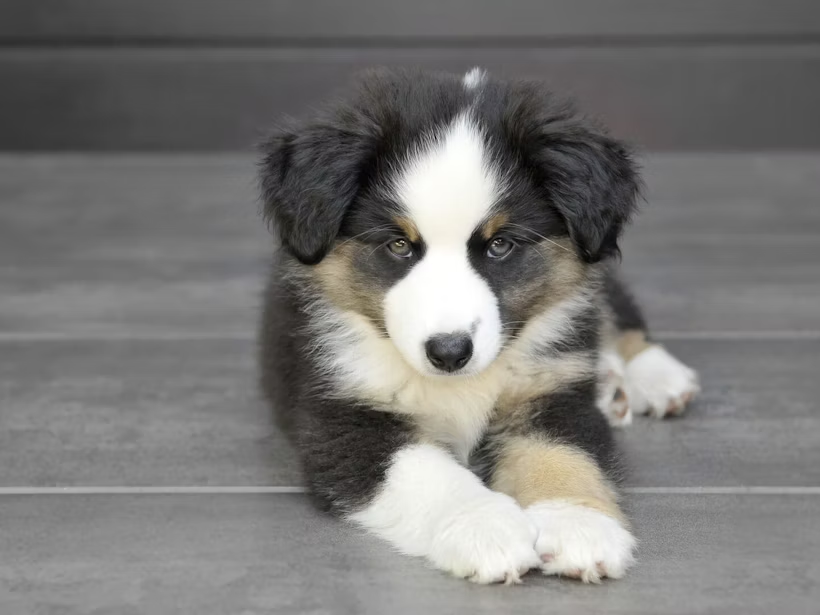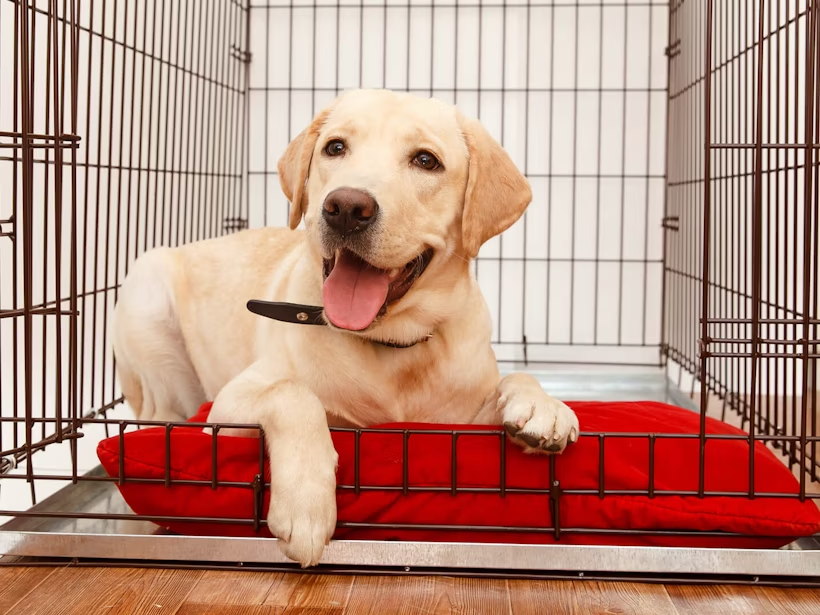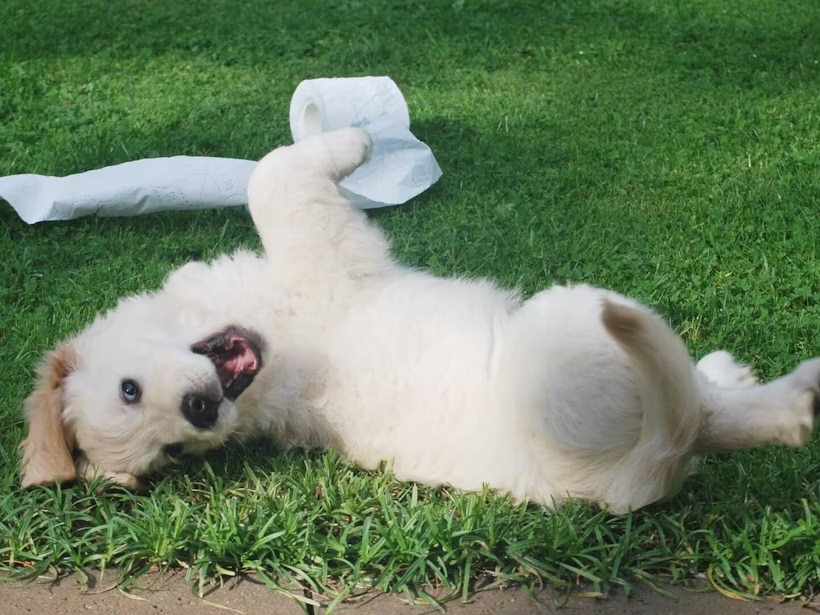Dog food: check. Cuddly toys: check. Puppy socialization: wait… what?
Many people don’t realize that puppy socialization is a critical component of new dog care. But it is! And for two key reasons:
- You have a short window of opportunity (socialization gets harder as your puppy ages)
- Under-socialized puppies often grow up to be fearful, reactive and generally harder to live with
In this post, you’ll get practical tips that will make you a puppy socialization pro.

What is puppy socialization?
In short, socialization involves thoughtfully exposing your puppy to various experiences she may have throughout life. This helps your pup develop into a well-balanced, confident dog. And that makes your life as a pet parent much easier.
As we mentioned above, under-socialization tends to cause behavioral problems. And behavioral problems are the most common reason people abandon their pets at shelters. (This issue alone accounts for 47% of “re-homed” dogs, according to ASPCA.)
So, socializing your puppy is paramount.

When should you start socializing your puppy?
Most experts agree that socialization works best when puppies are between a few weeks and about three months old.
A good breeder will likely begin socializing your pup before she joins your family. But if you get your dog around the recommended age of eight weeks, you’ll have only about six weeks of ideal socialization time left. And if you adopt, you may have even less. (That said, you can socialize an older dog—more on that next.)

Can you socialize older dogs?
Once a dog is about four months old, you’ve missed the ideal socialization window. That being said, it’s still possible to socialize adult dogs. But you typically must first focus on breaking bad habits and associations before creating new ones.
How? Generally, you should follow the process outlined in this article. But patience is key—older dogs usually don’t learn as quickly. And in cases of extreme fear, consider consulting a dog behaviorist.

Can you socialize your puppy before vaccinations?
Puppies typically don’t receive all their vaccinations until at least 16 weeks. So, you may be wondering, “How do I socialize a puppy before she’s fully vaccinated?”
The answer is, “carefully.”
You’ll find lots of safe puppy socialization ideas below. But here are a couple of important rules:
- Limit other-dog exposure to fully vaccinated dogs only (puppy socialization and training classes are also usually OK—more info below)
- Don’t let your puppy walk where unvaccinated dogs may have been (e.g., veterinary clinic floors, dog parks)

What is the best way to socialize a puppy?
Enough theory. Time for action.
What does a successful puppy socialization program actually look like? Here’s your five-step assignment.
1. Introduce your puppy to as many experiences as possible.
Variety is the spice of life, as they say. The more diverse the experiences your puppy gets comfortable with, the more predictable her future behavior may be.
The checklist below suggests plenty of experiences worthy of your focus. But the basic idea is to expose your new dog to anything she might encounter in life—from veterinary clinics to vacuum cleaners.

2. Make puppy socialization positive.
The whole point of puppy socialization is to desensitize your dog to experiences that could be scary or overwhelming. And the best way to do that is to associate such experiences with rewards (AKA, treats, praise and lots of love).
And remember, dogs can read our emotions, so aim to be calm and stress-free yourself during socialization.
3. Involve others.
Solicit socialization help from family, friends, pet-sitters, co-workers and other folks you know. This will not only help your pup get accustomed to different types of people but also ensure her confidence, regardless of who she’s with.
It’s also smart to invite others over to your home (and encourage them to bring their well-behaved, vaccinated dog or other pet along). Doing so can help prevent your dog from developing territorial aggression.

4. Take socialization slowly.
It is possible to over-socialize a puppy. And that happens when you expose your pup to too much, too quickly.
To avoid this, start small. For example, invite one friend over to meet your puppy. And don’t force the encounter—let your pup take her time getting to know your friend. Once you’ve successfully done that a few times, invite multiple friends over.
Ask people to approach your pup in a non-threatening way (e.g., allow hands to be sniffed, only pet where your dog can see).
Next, try visiting the people outside of your home. Eventually, build up to attending a puppy training class or a similar experience.
Throughout this process, watch for signs of discomfort (e.g., excessive panting, yawning). You don’t want to be pushy. But you also don’t want to make a scene out of timid behavior, as that could reward and reinforce your dog’s fear. It’s a balance.
5. Consider puppy socialization and training classes.
Puppy training classes provide your fur child the opportunity to socialize with other dogs in a controlled environment. And because training classes typically require vaccinations and prioritize sanitation, they’re much safer than, say, a dog park.
Regardless, choose wisely when introducing your puppy to other dogs (especially adult dogs), as undesirable “playing” behaviors have a way of spreading.

To help your puppy grow into a well-socialized dog, work on getting her comfortable with the following:
- People. Be sure to introduce your pup to people of different sizes, shapes, ethnicities, ages and races. (Don’t forget the mail delivery person!)
- Outfits, facial hair and accessories. In addition to meeting all kinds of people, your puppy should also meet those with unique accessories or physical features. Think sunglasses, hats, beards, crutches, canes, umbrellas—anything that might seem out of the ordinary.
- Places. Your pup may be wonderfully socialized at home. But what about the veterinary clinic, city sidewalk or your office? Haul your dog around with you—particularly when you’re visiting busy environments.
- Routine care. Handling your puppy’s paws, ears and tail, inspecting teeth, and bathing and brushing regularly will make future veterinary visits and grooming a breeze.
- Sounds. Doorbells, sirens, thunder, fireworks, loud trucks, barking dogs—alarming sounds abound in our modern world. Playing recordings of such sounds will help desensitize your dog to them.
- Vehicles. From veterinary visits to road trips, your pup will undoubtedly spend some time in the passenger seat. Practice riding in the car now to make it easier later. It’s also important to expose your puppy to vehicles from the outside. Resisting the urge to chase cars could save her life one day.
- Unusual surfaces. You may have heard stories about dogs who won’t do their business outside when the grass is wet. Perhaps you’ve seen dogs panic at the sight of cattle grates, stair landings or veterinary exam tables. These dogs probably didn’t spend much time walking on surfaces different from those they had at home.
- Other animals. Your dog will likely encounter a range of animals throughout life. Other dogs, cats, squirrels, rabbits, birds, deer, cows, horses… the list goes on. The more creatures your dog gets familiar with, the better. This is particularly important for dogs likely to have a strong prey drive, such as terriers.
- Mobile objects. Things that move can seem scary if your dog hasn’t ever encountered them. So, seek out mobile objects, such as bicycles, wheelchairs and strollers.
- Enclosed spaces. Crates, elevators and cars are all examples of confined spaces that could unsettle your pup if she’s not accustomed to them. Dogs get claustrophobia, too!
This is just a starter list. Be sure to think through any other potentially stressful activities or experiences that may be unique to your situation.



